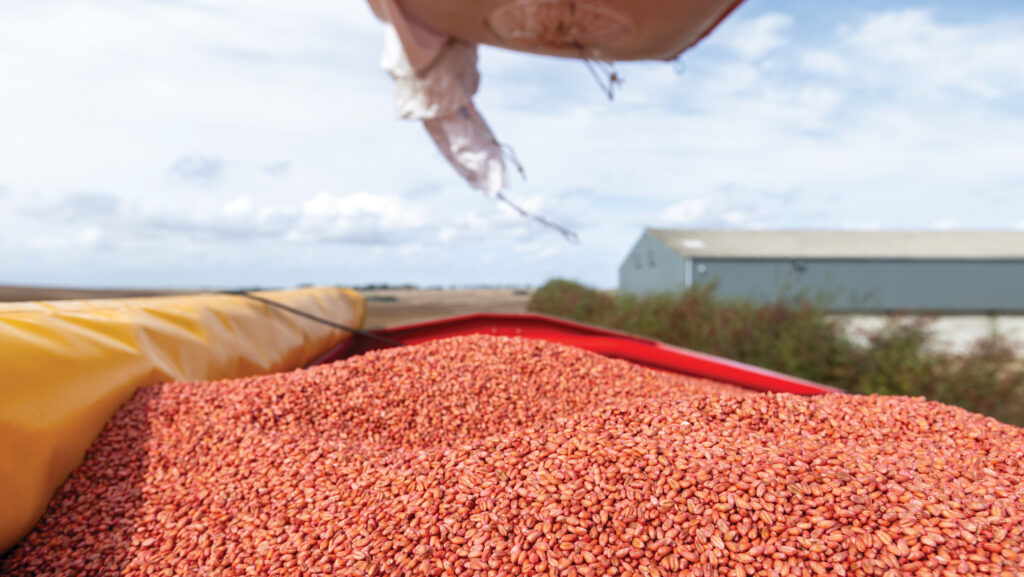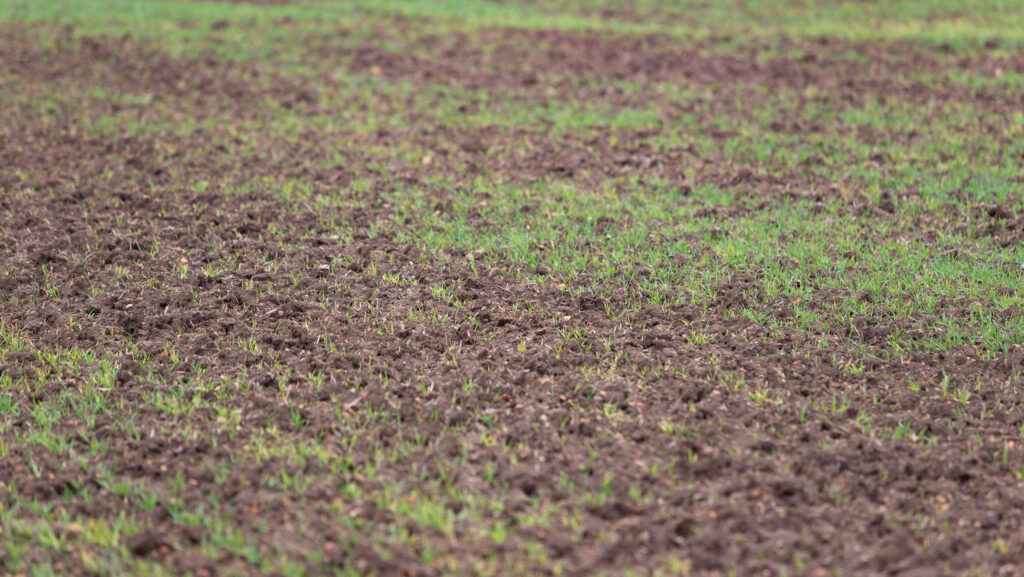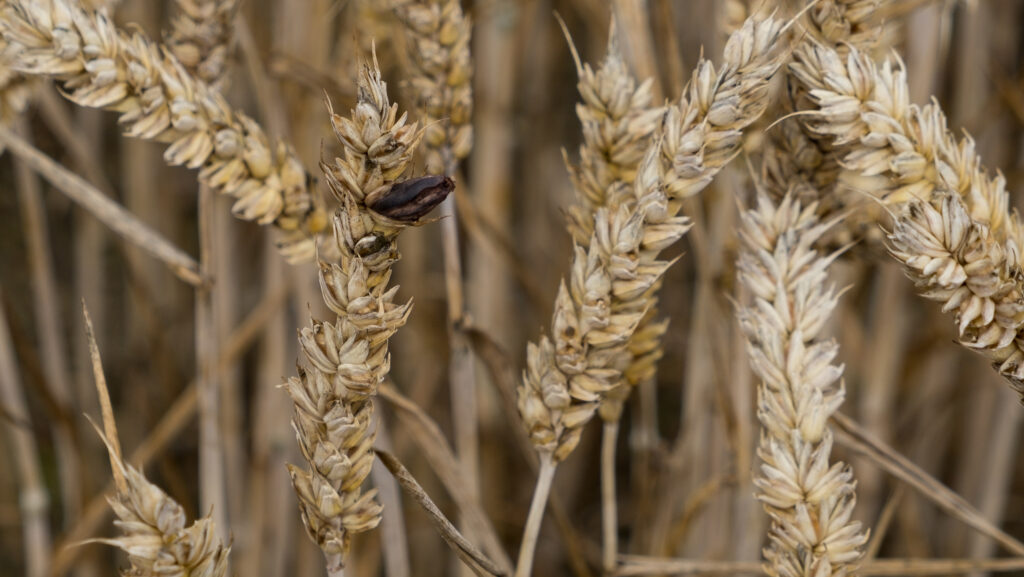Cereal seed treatments for farmers to consider this autumn
 © GNP
© GNP Seed treatments have many roles, which include fungicide dressings, nutritional enhancers, and in more recent years, the arrival of biological treatments have been added to some agronomy plans.
So as wheat drilling approaches, which seed treatments should farmers focus on?
Given the wet season, there is a chance that disease risk could be greater. Should farmers also consider a nutritional dressing to get crops off to the best start before the weather turns?
See also: 5 tips for achieving successful residuals herbicides sprays
With a bewildering range of products currently on the market, Agrii technical manager David Leaper looks back at several years of their trials data to see which pay and where farmer priorities should be this autumn.
1) Disease control
The key diseases for wheat are seedling blight (Microdochium nivale and fusarium) and bunt. For barley, it’s loose smut, seed-borne net blotch and leaf stripe, although the latter is rarely a problem with routine use of seed treatments.
Seedling blight, although endemic, is driven by rotation and weather. Looking at Niab data for 2022, 19% of seeds tested had fusarium.
Therefore, 19% could potentially die or have reduced vigour, says David. The following autumn (2023), disease levels dropped back and proved a lower year for seedling blight.

© Tim Scrivener
The disease affects germination and early establishment.
Seedling blight is not a problem with early drilling, but it is colder, wetter conditions that increases risk, associated with late drilling.
Regions such as Scotland and the borders are also a risk with the colder, wetter soils. The previous crop (maize) and cultivations (min till) also increase risk.
Fortunately, these diseases can be controlled with fungicide seed treatments based on fludioxonil (Beret Gold), prothioconazole (Redigo Pro) and ipconazole (Rancona).
The challenge for seed growers, however, is that they often don’t know the risk as there is little time to test seed before drilling. This is why prophylactic use of a seed treatment is adopted.
Farmers can also opt for Vibrance Duo (fludioxonil + sedaxane), which David says is the best product for disease control, with the sedaxane also giving a boost growth. He, therefore, recommends it for later drilled crops.
It is also useful on lighter, drought-prone land because of its rooting benefits and also when following maize where there is a higher loading of fusarium.
Other situations include second wheats and areas with greater seedling blight such as the Scottish borders.
“It is increasingly being used as the base fungicide treatment of choice by professional growers.”
David says Agrii trials 2017-2023 found an average response of 0.2t/ha over Beret Gold, which more than covers the extra cost.
Added blackgrass benefits
There is also data showing blackgrass benefits of using fludioxonil + sedaxane.
David points to Stow Longa trials that concluded that for optimum crop competitiveness against blackgrass, farmers need to achieve 300-350 plants/sq m in the spring.
To achieve this population with later drilling, sedaxane has a role by increasing establishment (%) by producing more resilient plants.
In the same trial, using Vibrance Duo significantly reduced the number of blackgrass ears at these higher seed rates.
In conclusion, delayed drilling combined with the seed treatment and a variety that has a more competitive ability, such as Skyfall, can help in the fight against blackgrass.
2) Nutritional seed treatments
Tissue testing has revealed that crops’ nutrient requirements vary according to growth stage, with plants needing greater levels of copper, zinc and manganese in earlier stages. In later stages, boron is a key nutrient.
Therefore, additional copper, zinc and manganese can have an impact in the early stages and lend themselves to seed dressings to support this early growth.
David says Agrii research has shown consistent responses in cereals with manganese, averaging 0.2t/ha. “We have seen responses regardless of soil manganese level due to the hunger gap in the seedling.”
Responses have also been seen with copper and zinc too, but David says these are better targeted where there are known soil deficiencies.
3) Biostimulant dressings
There is a huge number of biostimulant dressings and the market is awash with products and claims. But on closer inspection, there is little data backing some of them up.
To help farmers, Agrii has trialled many products over the years and some like Nuello iN have shown useful benefits.
Nuello iN is a seed dressing containing a mix of two endophyte bacteria – Pseudomonas siliginos and Curtobacterium salicaceae. They colonise the plant and convert nitrogen from the air into a form that the plant can use.
Syngenta has carried out nitrogen response trials, and in 2022 the average yield response was equivalent to a 30kg/ha benefit in nitrogen.
Syngenta field technical manager Jonathan Ronksley points out that it was a dry spring when it was harder to take up solid fertiliser.
In the following year, it was much wetter and plants had no problems taking up N, but they still saw a 30kg/ha benefit.
Jonathan believes the endophytes bring resilience to crops, helping to build biomass.
“Last autumn, we saw increased biomass and rooting, which helped crops cope with the adverse conditions better.”
It also offers an insurance policy for dry conditions like 2022 when fertiliser isn’t taken up, or when farmers are unable to get early fertiliser onto winter barley, which is turning yellow.
The average yield response is 0.2t/ha, which pays for the extra cost, but Jonathan says the tougher the conditions, the bigger the differences.
This could be in nutrient limiting situations such as on lighter land or second cereals following a high N demand crop like winter wheat.
He points to one trial in 2022 near Newark where chlorophyll testing showed the wheat crop was drought stressed and he saw a 0.5t/ha yield benefit over untreated.
Another biostimulant that has shown consistent benefits in 11 years of Agrii’s trials is phosphite (Take-off). Data shows a similar average yield benefit to Nuello iN of about 0.2t/ha, which more than covers its cost.
However, not all biostimulants offer consistent benefits. Often companies make quite impressive claims on germination, rooting, vigour and yields, but David points out that this is often based on glasshouse tests and they haven’t seen these benefits in their field trials.
Therefore, he says farmers need to be aware of what the claims are and look closer at the data backing them up.
4) Fungal disease take-all
The final category is silthiofam (Latitude), which accounts for 12% of Agrii seed treatment sales. This is the only seed treatment that is effective against the fungal disease take-all.
As the disease can halve yields in susceptible varieties, 20 years of data show good responses averaging 0.6t/ha in wheat.
David adds that while it is more expensive than other treatments, there are high rewards and he advises its use in high-risk situations such as:
- Second and third wheats, especially those drilled in September and October
- Sites with low manganese and phosphate levels
- Fluffy seed-beds, acidic and recently limed soils
- Second wheats with recent history of permanent grass.
David adds that the warm wet weather this year has favoured take-all build-up and increased the risk for second wheats going in this autumn.
However, the seed dressing is less cost-effective on barley, which can generally withstand take-all better than wheat.
What about ergot?

© Blackthorn Arable
This past harvest will be remembered for the much higher incidence of ergot in cereal crops and seed treatments can have a role in reducing the risk of it being carried in seed.
The increased Ergot is down to blackgrass, wet conditions during flowering and some varieties are more prone, being more open pollinators.
Syngenta field technical manager Jonathan Ronksley says the disease can be both soil-borne and spread by ergots in sown contaminated seed. However, where farmers suspect their seed is contaminated, a fungicide seed treatment can help this autumn.
Prothioconazole and fludioxonil-based products do not have full label claims for ergot, but data shows these fungicides are able to suppress germination of the ergot sclerotia.
Jonathan points to two seasons of data with winter barley contaminated with ergot drilled in the autumn.
The following spring, they recorded the number of stromata (indicating germinating ergot) produced each week from the end of May to the end of June.
In untreated seed, they saw germination while for the treated seed, the fungicide had suppressed germination.
Agrii technical manager David Leaper says the data suggests that if farmers have seed with ergots, Beret Gold can help control it.
“Seed dressings can help manage risk from what is in the bag.”
Overall summary
To help farmers with their decisions this autumn, David Leaper has looked at all the results over the years to help prioritise which ones to consider.
Fungicide seed treatments remain the basis for maintaining seed health against the key seed- and soil-borne of cereals and Vibrance Duo sets the standard.
Protecting against yield loss from take-all. Latitude is a priority in higher risk situations.
Targeted crop nutrition using high-load manganese. Zinc and copper should be considered if soil tests show deficiency.
Consider biostimulants, such as Take-off and Nuello In. David adds that the responses are smaller, but they are additive and that is when the real benefits are seen.

